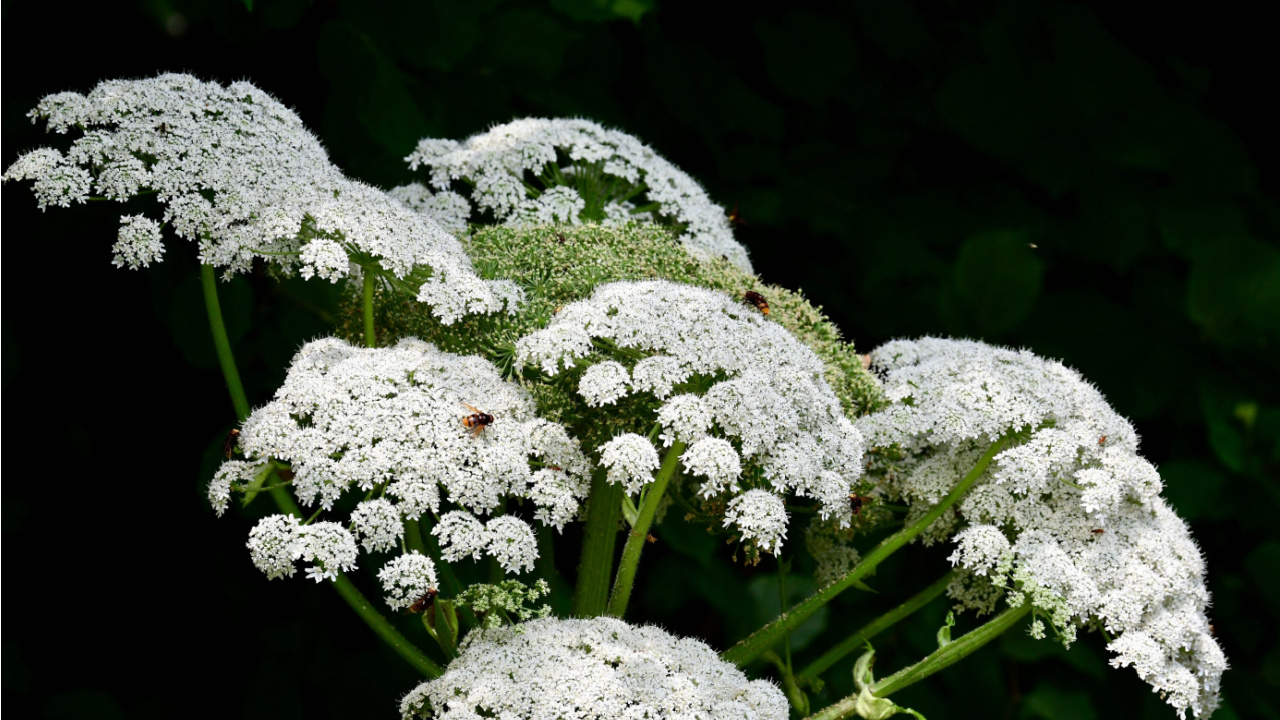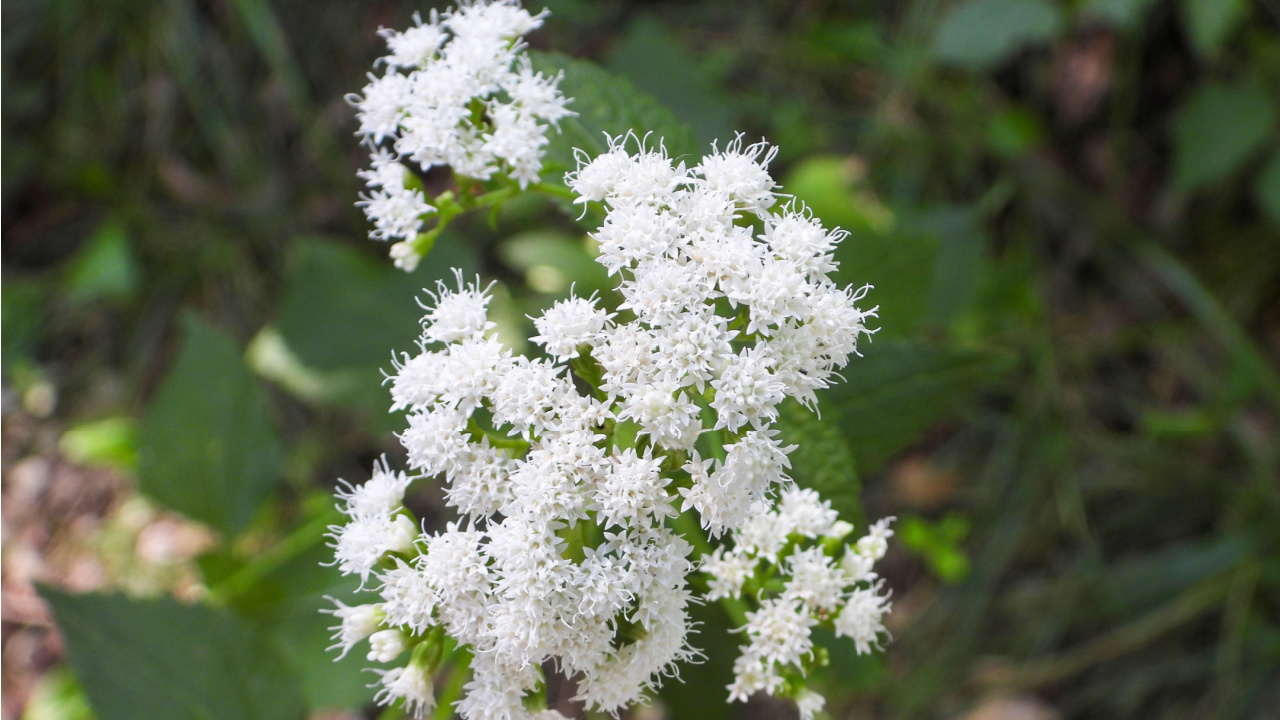As both a homesteader and master herbalist, plants are my passion. The right plants provide us with food and medicine, but the wrong ones, or even the right ones used incorrectly, can be deadly. There are over 382,000 known species of plants, many with incredible health benefits. However, some are extremely dangerous, not just to us but also to our pets and livestock.
Plants have evolved various defense mechanisms to avoid being eaten by animals. While some use physical deterrents like thorns, others produce powerful toxins that can cause serious illness or even death if ingested.
It’s crucial to recognize these dangerous plants. You might be surprised to find some of them growing in your own yard. In this post, we’ll explore 28 beautiful yet dangerous plants you need to be aware of to keep yourself, your family, and your animals safe.
Jimson Weed

Jimson weed, recognized by its green leaves sometimes tinged with purple, is a plant you definitely don’t want to mess with. Although it has been historically used to treat conditions like asthma, ingesting or inhaling it can lead to severe reactions such as nausea, hallucinations, and vomiting. This plant is widespread across North America and the Caribbean.
Its hallucinogenic properties make it particularly dangerous, but its toxic components, concentrated in the leaves and seeds, make it deadly. The risk of poisoning varies with the plant’s age and environmental conditions, which can lead to potentially fatal overdoses for those unaware of its potency.
Lantana

The vibrant lantana is eye-catching but keep it away from children and pets. Despite its appealing appearance, this plant is poisonous, capable of making both humans and animals ill if they come into contact with it.
Deadly Nightshade

Deadly nightshade, or Atropa belladonna, is a plant with a lethal legacy, belonging to the same botanical family as tomatoes and potatoes. Its main toxic components — atropine, scopolamine, and hyoscyamine — target the nervous system. Symptoms of poisoning may take days to appear but can include dilated pupils, rapid heartbeat, blurred vision, and delirium, leading to potentially fatal outcomes.
The pretty, juicy-looking red berries make this plant particularly dangerous to young children who don’t know better. Ingesting just a handful of these berries could be enough to endanger an adult’s life.
Mountain Laurel

The Mountain Laurel, Kalmia latifolia, with its stunning blooms, is deceptively dangerous. Consumption of any part of this plant can be fatal to animals and humans because of the high concentration of toxins, most notably andromedotoxin and arbutin. The toxins in this plant are so potent that even honey made from its pollen is dangerous. And you don’t even have to eat it. Children have been poisoned from just sucking on the flowers of this plant.
Chinese Lanterns (Physalis alkekengi)

Chinese Lantern plants are recognized for their vibrant, lantern-shaped pods, which are often used in dried floral arrangements and wreaths. However, the leaves and unripe fruit of the plant contain toxic substances. While the decorative use of its pods can add a splash of color to your home decor, keep the plant parts that contain toxins out of reach of children and pets.
Manchineel (a.k.a. Little Apple of Death)

The Manchineel tree, often called the “Little Apple of Death,” is notorious for its deadly fruit and is considered one of the most poisonous trees in the world. Found in coastal regions of Florida, South, and Central America, every part of this tree, especially its sap, is laden with potent toxins.
The sap contains phorbol, which causes severe skin irritation and blistering upon contact. This tree poses a hidden danger during rainstorms, as seeking shelter under it can lead to sap-infused water causing painful skin injuries. Historical accounts note that indigenous peoples used the tree’s toxic components as weapons, poisoning water supplies and coating their arrowheads with it.
Giant Hogweed

Giant Hogweed’s danger lies in its sap, rather than its flowers. Contact with this sap can lead to phytophotodermatitis, making the skin hypersensitive to sunlight and resulting in severe burns and blisters. It’s an invasive plant that causes nasty, painful burns in humans and animals. If you do have this on your property, keep dogs and littles well away from it, and make sure your skin is completely covered before you attempt to remove it.
Yellow Dock

While Yellow Dock is known for its medicinal uses, it presents dangers when consumed raw or unprocessed. Its consumption can lead to significant health issues, including respiratory distress and heart complications. It’s also toxic to dogs. As with all medicinal plants, knowledge and proper preparation are key. If you don’t know how to prepare and use it, leave it alone or seek the advice of a seasoned herbalist.
Rosary Pea

Rosary peas, with their striking orangey-red seeds marked by a single black spot, are as dangerous as they are beautiful. Found in tropical regions and often used in jewelry like prayer rosaries, these seeds hide a lethal secret. While their tough outer shell allows them to pass harmlessly through the digestive system if swallowed whole, any damage to the seed can release abrin, a toxin far more potent than ricin. Just a tiny scratch or chew can unleash its deadly potential, making the rosary pea a beautiful but perilous adornment. Rosary peas are potentially fatal for humans, pets, and livestock, so steer clear of them.
Tobacco

Tobacco, a plant known worldwide for its addictive and psychoactive properties, harbors nicotine and anabasine, toxins that are fatal if ingested. Despite its widespread use and the cultural significance of smoking, the plant itself poses a direct risk to health. Ingesting the dangerous alkaloids causes two distinct phases. Firstly, abdominal pain, hypertension, tachycardia, and involuntary tremors. Later, people experience hypotension, bradycardia, dyspnea, then coma and respiratory failure.
Lily of the Valley

Fans of “Breaking Bad” might recall Walter White’s use of Lily of the Valley’s innocent appearance for sinister purposes. This plant’s cardiac glycosides can cause severe symptoms like dizziness, vomiting, and diarrhea, leading to hospitalization or even death if untreated.
Castor Oil Plant

While castor oil is celebrated for its healing properties, the plant it comes from, the castor oil plant, is anything but benign. Containing ricin, one of the most toxic naturally occurring substances, even a single seed can be deadly. The toxin causes severe symptoms, leading to death by dehydration.
Brugmansia (a.k.a. Angel’s Trumpets)

Angel’s Trumpets, with their enchanting, trumpet-shaped flowers, contain dangerous toxins that can induce intense hallucinations and severe physical effects. Native to South America’s tropical regions, every part of this plant is poisonous, capable of causing disorientation, violent illness, and in extreme cases, life-threatening actions. Inspite of the intense danger from this plant, some people use it as a recreational drug, but this is insanely dangerous and can result in paralysis, psychosis, and death.
Foxglove

Foxglove’s bell-shaped flowers may catch your eye with their beauty, but they are one of the most dangerous plants in the world. These plants contain digitalis, a compound used in heart medications.
Accidentally eating foxglove is akin to taking an unregulated heart medicine dose, which can be extremely dangerous. The entire plant, especially the leaves, is toxic, and mistaking them for edible herbs like borage could be a fatal error.
Symptoms of poisoning include nausea, headaches, and severe skin and stomach irritation. Despite its toxicity, foxglove’s compounds are used in medical treatments to stimulate the heart, but only by professionals who know how to correctly regulate and dose the compounds in the plant.
Foxglove is potent enough that you can absorb its compounds through your skin if you handle it too much, so always wear gloves and long sleeves if you are pulling plants from your garden.
I love foxgloves. They’re beautiful. And my animals are very good at not eating plants. But I still removed all of them from my property when I first moved in, just to be safe.
Wisteria

Wisteria vines are known for their stunning blooms, but beware of their seed pods. Toxic to dogs, cats, and horses, as well as humans, ingestion can lead to symptoms like vomiting and diarrhea. All parts of the plant contain harmful lectins and wisterin, which can cause nasty symptoms is ingested.
Lilies

Lilies, particularly those in the Hemerocallis genus, pose a deadly risk to cats, with even small amounts causing acute kidney failure or death. Popular during Easter, tiger, and daylilies are especially hazardous. Cat owners should avoid keeping these flowers in or around the home to protect their feline friends. It’s important to note that lilies are dangerous to humans, dogs, and other animals, too, not just cats.
Dieffenbachia

Known as dumb cane, dieffenbachia can be deadly if ingested, leading to swollen airways and potentially asphyxiation. Contact with the plant can also cause skin irritation.
Daffodil

While daffodils signal the arrival of spring with their cheerful blooms, their bulbs contain toxins that are especially dangerous to dogs who dig. Ingesting daffodil bulbs can lead to serious health issues, including vomiting, diarrhea, and more severe reactions like convulsions and cardiac arrhythmias.
Hydrangea

Hydrangeas, with their lush flowers, contain cyanogenic glycosides, compounds that can release cyanide when ingested. Although it takes a significant amount of plant material to cause fatal poisoning, pets and children should be kept away from these plants to avoid any risk of illness.
Oleander (a.k.a The Jericho Rose)

Oleander is renowned for its beauty but is infamous for its toxicity. Every part of the plant is poisonous, containing cardiac glycosides that can cause severe illness or death upon contact or ingestion.
Symptoms of oleander poisoning are immediate and severe, including cardiac and gastrointestinal distress. Even honey derived from oleander flowers can carry toxins, and inhaling the smoke from burning oleander can lead to poisoning. Despite its hazards, oleander poisoning cases are rare, thanks to the plant’s bitter taste acting as a natural deterrent.
Water Hemlock (a.k.a. Poison Parsnip)

Water Hemlock, disguised as a harmless wildflower, is one of North America’s most dangerous plants. Its white flowers and carrot-like scent might fool you, but its toxins are fierce, attacking the nervous system. Ingesting even a small part can lead to convulsions, tremors, and severe nervous system damage. Known as Poison Parsnip, this plant’s roots contain cicutoxin, especially potent in spring, leading to symptoms like nausea, vomiting, and potentially, respiratory failure or heart problems, proving fatal within hours.
Philodendron

Philodendrons are popular houseplants that add a tropical vibe to indoor spaces. Yet, their sap can cause significant discomfort if it comes into contact with skin or is ingested, leading to throat swelling, difficulty breathing, and stomach upset. While severe reactions are rare, it’s important to keep these plants out of reach of children and pets to prevent any accidental exposure.
English Yew

The English Yew, an elegant tree known for its red berries, is potentially lethal if ingested. Apart from the berries, the entire plant is toxic, with seeds containing highly potent alkaloids. Specifically, taxane alkaloids. Ingesting a small amount of its parts can lead to serious symptoms, including convulsions and heart failure.
Mistletoe

Mistletoe, a symbol of holiday cheer, might not kill you, but it’ll certainly make you sick if you eat it. While its ability to cause death is debated, it can certainly induce digestive issues, a slowed heartbeat, and even hallucinations in humans and pets in large doses. Like the other plants on this list, keep this parasitic plant well away from littles and pets.
White Snakeroot

White snakeroot contains a deadly chemical called tremetol. All parts of this plant are poisonous to the majority of warm-blooded animals. While direct consumption will cause poisoning in humans, the most common route of poisoning is via”milk sickness,” which is where humans ingest dairy products or meat from cows who’ve eaten white snakeroot.
Interestingly, Abraham Lincoln’s mother reportedly died after drinking milk from a cow that ate white snakeroot. Its ingestion can lead to severe vomiting, delirium, and potentially fatal outcomes.
Aconite

Aconite, known as Wolfsbane, Monkshood, or Devil’s Helmet, stands out for its lethal beauty. Although it’s incredibly dangerous, it’s one of my absolute favorite plants, although I don’t keep any on my property because of my pets. Just in case. Because the toxic compounds in aconite are incredibly potent, and I don’t want to risk it.
Touching or ingesting even a small part of this plant can be incredibly dangerous, as it contains a potent poison that affects the nervous system, leading to symptoms ranging from gastrointestinal distress to severe respiratory issues, which can quickly result in death. Native to the northern hemisphere, Aconite has a long history of use as a poison thanks to its high concentrations of cardiotoxins and neurotoxins.
Even today, there’s no known antidote, so the mortality rate is incredibly high.
Suicide Tree

The suicide tree, or Cerbera odollam, earns its grim name from the frequency of its use in suicides and murders, particularly in parts of India. Every part of this plant, especially its seeds, contains cerberin, a toxin that disrupts the heart’s rhythm. Its fruits might look tempting, but they are very dangerous, capable of causing death swiftly and painfully, making it one of the most infamous plants in the world for its association with intentional poisonings.
Eating just a single kernel from the fruit of this tree is enough to kill an adult. This plant is used to commit suicide more than any other.
17 Most Devastating Tornadoes In History

Nature’s fury is terrifying, and tornadoes are among the most deadly natural phenomena. These 17 deadly tornadoes highlight nature’s power and the resilience of humans in the aftermath of such devastation.
24 Most Devastating Blizzards in US History

For preppers, understanding the power and impact of historic blizzards is key to being prepared for future winter emergencies. Each of these historic snowstorms teaches valuable lessons about resilience, planning, and survival. The more prepared we are, the better our chances of survival in an emergency scenario.
- Read More: 24 Most Devastating Blizzards in US History
23 Riskiest Cities To Be During a Power Grid Collapse
In a world where the stability of our power grid is increasingly under threat, knowing which urban areas to avoid during a blackout is crucial for any serious prepper. And which areas to escape as quickly as possible. When you’re making your survival plans, keep in mind that these are the places you don’t want to be.

Katy Willis is a writer, lifelong homesteader, and master herbalist, master gardener, and canine nutritionist. Katy is a preparedness expert and modern homesteader practicing everyday preparedness, sustainability, and a holistic lifestyle.
She knows how important it is to be prepared for whatever life throws at you, because you just never know what's coming. And preparedness helps you give your family the best chance to thrive in any situation.
Katy is passionate about living naturally, growing food, keeping livestock, foraging, and making and using herbal remedies. Katy is an experienced herbalist and a member of the CMA (Complementary Medical Association).
Her preparedness skills go beyond just being "ready", she's ready to survive the initial disaster, and thrive afterward, too. She grows 100% organic food on roughly 15 acres and raises goats, chickens, and ducks. She also lovingly tends her orchard, where she grows many different fruit trees. And, because she likes to know exactly what she's feeding her family, she's a seasoned from-scratch cook and gluten-free baker.
Katy teaches foraging and environmental education classes, too, including self-sufficient living, modern homesteading, seed saving, and organic vegetable gardening.
Katy helps others learn forgotten skills, including basic survival skills and self-reliance.
She's been published on sites such as MSN, Angi, Home Advisor, Family Handyman, Wealth of Geeks, Readers Digest, and more.
